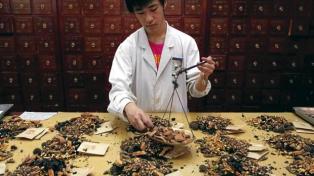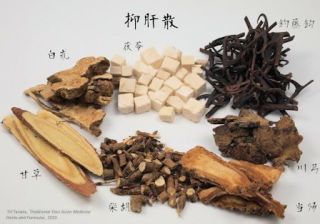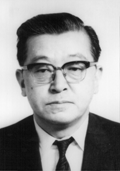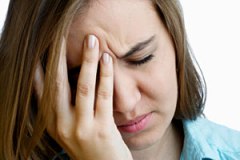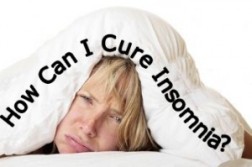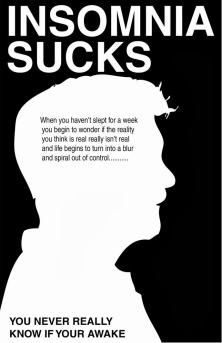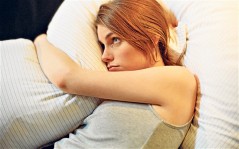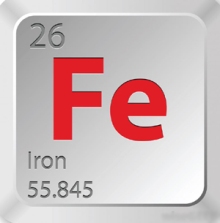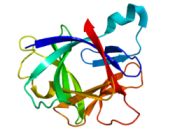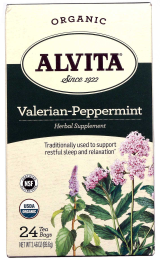 This article was written by Brenda Priddy on ProgressiveHealth.com. She talks about my history with RLS and the RLcure.com website. However, the facts are a bit skewered. The truth is that I found out about the relationship between RLS and inflammation through my own personal experience. My relationship with Dr. Leonard Weinstock and his RLS study occurred several years into my recovery. However, as they say, there’s no such thing as bad press. So, I’m leaving the article intact, as it was originally published on the ProgressiveHealth.com website.
This article was written by Brenda Priddy on ProgressiveHealth.com. She talks about my history with RLS and the RLcure.com website. However, the facts are a bit skewered. The truth is that I found out about the relationship between RLS and inflammation through my own personal experience. My relationship with Dr. Leonard Weinstock and his RLS study occurred several years into my recovery. However, as they say, there’s no such thing as bad press. So, I’m leaving the article intact, as it was originally published on the ProgressiveHealth.com website.
The precise cause of RLS is unknown. Researchers have several theories about the origins of RLS, but until recently, there was no clear link between one cause and RLS. Find out the curious connection between RLS and inflammation below.
Restless Legs Syndrome is a condition that is irritating, unhealthy, and socially damaging. The Willis-Ekbom Disease (WED) Foundation and XenoPort, Inc. recently conducted a survey on 1600 individuals with restless leg syndrome as well as information from their partners on how the disease affects their quality of life and emotional health.
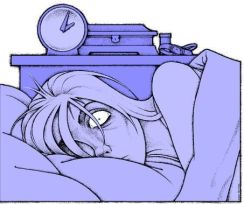 The data that the survey uncovered revealed a lot about the damaging affects of RLS.
The data that the survey uncovered revealed a lot about the damaging affects of RLS.
90 percent of couples suffered from sleep disturbances
90 percent of couples reported having to adjust travel plans based on the condition
90 percent of couples said they were kept from participating in at least social event due to the disease
50 percent of RLS patients wish they had more support from loved ones
74 percent of partners said their daily lives were interrupted by RLS symptoms
47 percent of RLS patients and 34 percent of partners said they avoid movies, concerts, and theaters due to the disease
One-third of patients and spouses report sleeping in a separate bedroom due to RLS sleep disturbances
These social effects of RLS are only one way that the disease can affect a person and everyone in their life. There are many other physical side effects of the disease, including chronic insomnia; a higher risk for insomnia-related medical conditions like weight gain, heart disease, and stroke; and a reduced immune system.
Although there are many dangers to RLS, both social and physical, new studies have uncovered a promising cure for the disease, as David found out. Read more about his battle with RLS and the cure that finally worked for him below.
 David’s Story
David’s Story
David Wimble had restless leg syndrome for over 20 years. He suffered from many of the social symptoms of the disease, including the inability to sit and enjoy outings or even movie watching with his wife. Flying by plane was nearly impossible.
For over 8 years, he suffered from excruciating pain in his legs, ranging from numbness, to constant tingling, and the inability to keep still. David tried nearly every remedy for RLS he could think of. He tried diets, a wide range of supplements, teas, exercise, chiropractic care, acupuncture, and massage. However, none of these treatments lasted for long. David was desperate and frustrated.
Finally, after studying numerous studies on restless leg syndrome and the causes of RLS, David stumbled across a 2011 study conducted by the Washington University School of Medicine. This study examined the roles of the immune system and the inflammatory response of the body.
In the study, researchers found that 54 other diseases are linked to RLS. 95 percent of these diseases are inflammation-related, and due to excessive levels of inflammation in the body. The researchers theorized that since RLS is related to so many inflammatory diseases, that perhaps controlling overall inflammation in the body would relieve RLS symptoms.
David found this to be true. He eliminated all sources of inflammation from his diet, started supplementing with anti-inflammatory vitamins and supplements, and took whatever steps necessary to completely remove as much inflammation from his body as possible.
To this day, David is living a normal life without restless legs or any other symptoms of RLS. These results have lasted over 5 years, when previous treatments have only lasted a few months.
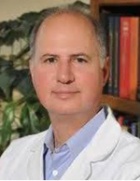 Inflammation and RLS
Inflammation and RLS
The Washington University study poses an interesting theory about the cause of restless legs syndrome. RLS is usually thought relating to iron deficiency, the deregulation of dopamine, or peripheral neuropathy. Additionally, many patients with RLS have an increased prevelance of intestinal bacterial overgrowth.
The researchers believe that this could suggest that inflammation in immunological alterations play a key role in the start of RLS symptoms. The researchers found that 38 diseases are highly linked to the start of RLS symptoms. 95 percent of these diseases are immune system-related, and trigger inflammation in the body, or are caused by excessive inflammation. Due to this link, the researchers stated that this “suggests the possibility that RLS may be mediated or affected through these mechanisms.
Inflammation can be responsible for iron deficiency and hypothetically could cause central nervous system iron deficiency-induced RLS. Alternatively, an immune reaction to gastrointestinal bacteria or other antigens may hypothetically cause RLS by a direct immunological attack on the central or peripheral nervous system.”
 A 3-STEP PLAN FOR CURING RLS
A 3-STEP PLAN FOR CURING RLS
David identified a 3-step plan for curing RLS that worked for him. This plan involves removing inflammation from the diet, curing existing inflammation, and maintaining an anti-inflammatory diet so that inflammation does not return. This plan has enabled David to live symptom-free for over 2 years.
1. STOP THE SPREADING OF INFLAMMATION
According to studies from John Hopkins University, histamine and glutamate levels are higher in individuals with RLS. The researchers state that the “hyper arousal” state that is seen in RLS patients is likely caused by too-high histamine levels. Side effects of high histamine levels can contribute to a variety of bizarre symptoms, including irritability, sleep disruption, and agitation. A histamine is simply a compound in the body that is an inflammatory response to infections and invasions.
Ordinarily, histamines can help fight infections, but when an immune disorder is present, histamine levels can skyrocket, leading to side effects that contribute to RLS.
Another study from John Hopkins University linked high glutamate levels with an increase in RLS symptoms. Glutamate levels rise when dopamine levels drop. Glutamate is an amino acid used for many benefical processes in the body, such as to create an alert state during waking hours. However, when glutamate levels rise, a person has trouble concentrating, keeping still, and sleeping.
People with RLS appear to be more sensitive to glutamate than individuals without RLS. Other studies have shown that too-high levels of glutamate can lead to neurotoxicity, which is dangerous for the brain and body. Reducing glutamate levels in the brain may contribute to a reduction in RLS symptoms.
Supplementing with GABA may help balance the appropriate levels of glutamate and dopamine in the brain, according to some studies.
Sources of Glutamate:
Cheese
Meat
Fish
Eggs
Soy
Seeds
To reduce inflammation, you should eliminate foods that contribute to inflammation. Although some inflammation is good for your health, individuals with RLS are typically more sensitive to inflammation, which may be the cause of your symptoms.
For a few months at least, try to eat as few inflammation-causing foods as possible to help restore a healthy balance of amino acids and hormones in your body.
 Inflammation-Causing Substances
Inflammation-Causing Substances
Vegetable oils
Trans fats
Sugar
Gluten
Alcohol
Caffeine
MSG
Processed foods
Fried foods
Advanced glycation end products (AGE)-comes from high-heat cooking, including pasteurization
Dairy
Cigarettes
Preservatives
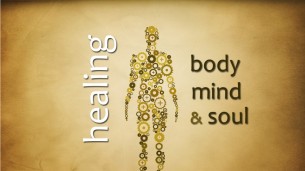 2. HEAL THE EXISTING INFLAMMATION
2. HEAL THE EXISTING INFLAMMATION
The next step in curing restless legs syndrome is to repair any existing inflammation in your body. It can take time to eliminate all inflammation, particularly if you have not paid much attention to your diet or lifestyle over the years.
Luckily, there are numerous supplements that have inflammation-fighting properties. These supplements will not only help cure restless leg syndrome, but they will also reduce your risk of many other common illnesses and diseases; including heart attacks, strokes, diabetes, and more.
The following supplements are effective at eliminating inflammation, restoring the balance of amino acids in the brain, and reducing RLS symptoms:
GABA: GABA is an essential amino acid that helps regulate glutamate levels and balance dopamine levels. Individuals with RLS often have low levels of GABA, which could contribute to an increase in symptoms. In 2011, researchers from the Quest Research Institute investigated the potential of GABA supplements for treating RLS. Participants supplemented with GABA for 52 weeks. At the end of the study, 84 percent of participants reported that their symptoms were “improved” or “very much improved.”
Calcium and Magnesium: Magnesium is an incredibly important mineral for the body. Magnesium is particularly important for nervous system health and brain health. Magnesium directly impacts natural GABA levels. Magnesium also reduces histamine release, which also benefits patients with RLS. Magnesium is most effective when taken in conjunction with calcium.
A 1998 study conducted by Albert-Ludwigs University in Germany found that supplementing with magnesium was able to significantly reduce symptoms and improve sleep quality of study participants with RLS.
Iron: Iron is necessary for many functions, but one of the most important is for carrying oxygen from the lungs to the rest of the body. Low iron levels lead to sluggish body systems. The first signs of an iron deficiency include irritability, fatigue, and headaches. When the body is inflamed, it absorbs less iron. This can increase the chances that you will suffer from restless leg syndrome. This occurs because low iron levels lower dopamine levels in the brain, which can interfere with the circadian rhythm of the body.
In a study conducted by Beaumont Hospital in 1994, it was found that supplementing with iron for 2 months in elderly individuals with RLS improved their RLS severity score.
B Vitamins: B vitamins are essential vitamins for many of the body’s systems and functions. B vitamins, however, are water-soluable, and are not stored in the body. This means that you must replace these vitamins daily to maintain the vitamin levels necessary for optimal system functioning. Reduced levels of vitamin B12, vitamn B9 (folic acid or folate), and B6 can all lead to restless legs symptoms. Some researchers theorize that pregnant women are more likely to suffer from temporary RLS due to B vitamin deficiencies.
According to Web MD, these B vitamins are also anti-inflammatory, which can also contribute to a reduction in RLS symptoms. In a study of pregnant women conducted by the University of California San Francisco in 2001, researchers found that supplementing with additional folic acid and iron was able to significantly reduce RLS symptoms. A study published in “The New England Medical Journal” in 2000 found that supplementing with B12 reduced leg tremors.
Glycine: Glycine is another vital substance in controlling RLS and inflammation. Glycine acts like a neurotransmitter and regulates both motor reflexes and nociceptive pathways. Glycine interacts with GABA, which helps reduce tremors and inflammation. In a study conducted on mice in 1985, researchers found that supplementing with glycine has anticonvulsant effects.
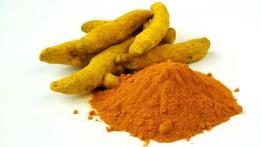 Curcumin: Curcumin is contained in turmeric and ginger, and is one of the most powerful natural anti-inflammatory agents in the word. Curcumin has been studied extensively, and is one of the most-studied herbs in the world today. Curcumin deactivates immune cells that cause excessive inflammation without reducing the effectiveness of the immune system. Curcumin can act similarly to an immunosuppressant medication, but without actually suppressing the infection-fighting powers of a healthy immune system. Curcumin is an antioxidant, anti-inflammatory, and anti-histamine agent.
Curcumin: Curcumin is contained in turmeric and ginger, and is one of the most powerful natural anti-inflammatory agents in the word. Curcumin has been studied extensively, and is one of the most-studied herbs in the world today. Curcumin deactivates immune cells that cause excessive inflammation without reducing the effectiveness of the immune system. Curcumin can act similarly to an immunosuppressant medication, but without actually suppressing the infection-fighting powers of a healthy immune system. Curcumin is an antioxidant, anti-inflammatory, and anti-histamine agent.
Valerian: Valerian is an herb that promotes health and fights inflammation. Valerian fights stress, insomnia, nervousness, and restlessness. Valerian can also reduce swelling, pain, and redness associated with inflammation. Supplementing with valerian increases the natural levels of GABA in the brain, according to the University of Maryland. Studies on sleep disorders, including RLS, found that supplementing with valerian (and other calming materials, like hops or lemon balm) was able to help study participants relax and sleep better.
Omega 3s: Omega 3 fats are some of the most anti-inflammatory fats in the world. Unlike omega 6 fats, which are highly inflammatory, omega 3 fats can counteract inflammation from a wide variety of poor diet choices. That is one reason why ensuring you have a healthy dose of omega 3s in your diet is one of the most simple steps you can take to improve your overall health. Aside from these essential supplements, you may also find the following supplements beneficial in reducing inflammation and fighting RLS.
Other Beneficial Supplements
Vitamin D
Grape seed extract
Vitamin C
Bromelain
Potassium
Skullcap
Chamomile
Ginger
Green tea
Zinc
Vitamin A
Vitamin E
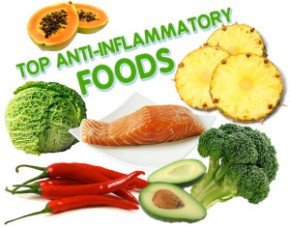 3. MAINTAIN AN ANTI-INFLAMMATORY DIET
3. MAINTAIN AN ANTI-INFLAMMATORY DIET
The third part of David’s cure for restless legs syndrome is to simply avoid further sources of inflammation in the diet, and ensure you eat a wide variety of foods that fight inflammation. This is a simple step that you can use to control your health and reduce your chances of seeing additional RLS episodes.
The basic diet includes eating a lot of fruits and vegetables, minimizing inflammatory foods like trans fats, vegetable oils, and red meat, eating a lot of omega 3 fats, reducing consumption of processed foods and refined carbohydrates, and adding anti-inflammatory spices like ginger, curry, garlic, onions, thyme and other herbs. The following foods are all inflammation fighters and would make an excellent addition to your RLS diet:
Anti-Inflammatory Foods
Fish
Leafy greens
Berries
Cherries
Walnuts
Beets
Blueberries
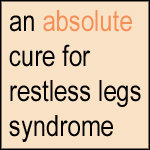 The Anti-Inflammatory Cure for Restless Legs Syndrome
The Anti-Inflammatory Cure for Restless Legs Syndrome
If you have RLS, you will likely to almost anything to get a good night’s sleep and stop the chronic restlessness and pain that the condition brings. Even if you suffer only occasionally from the disorder, every sleepless night is a night that interferes with your overall health. David found a way to control his RLS symptoms by eliminating inflammation from his diet. Research suggests that this could be a key factor in controlling RLS symptoms.
If you want to try the three-step anti-inflammatory plan for controlling RLS, try it for a few months. It can take several weeks or months before you see positive results. A lifestyle of chronic inflammation takes a while to counteract.
With the right supplements, diet, and avoiding inflammation triggers, you may be able to say goodbye to your RLS for good!
Sources:
http://online.wsj.com/article/PR-CO-20140213-911574.html
http://www.rlcure.com/my-history-with-restless-legs-syndrome-willis-ekbom-disease.html
http://www.rlcure.com/rls_study.pdf
This article was originally published on the ProgressiveHealth.com website:
http://www.progressivehealth.com/3-steps-reversing-rls.htm?utm_expid=4620948-17.jbto_HQzQDGLaCs8qqTSSQ.0
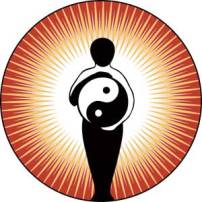 In the following study from 2005, researchers created a mixture of several healing ingredients and produced a syrup which the children with RLS took orally.
In the following study from 2005, researchers created a mixture of several healing ingredients and produced a syrup which the children with RLS took orally.